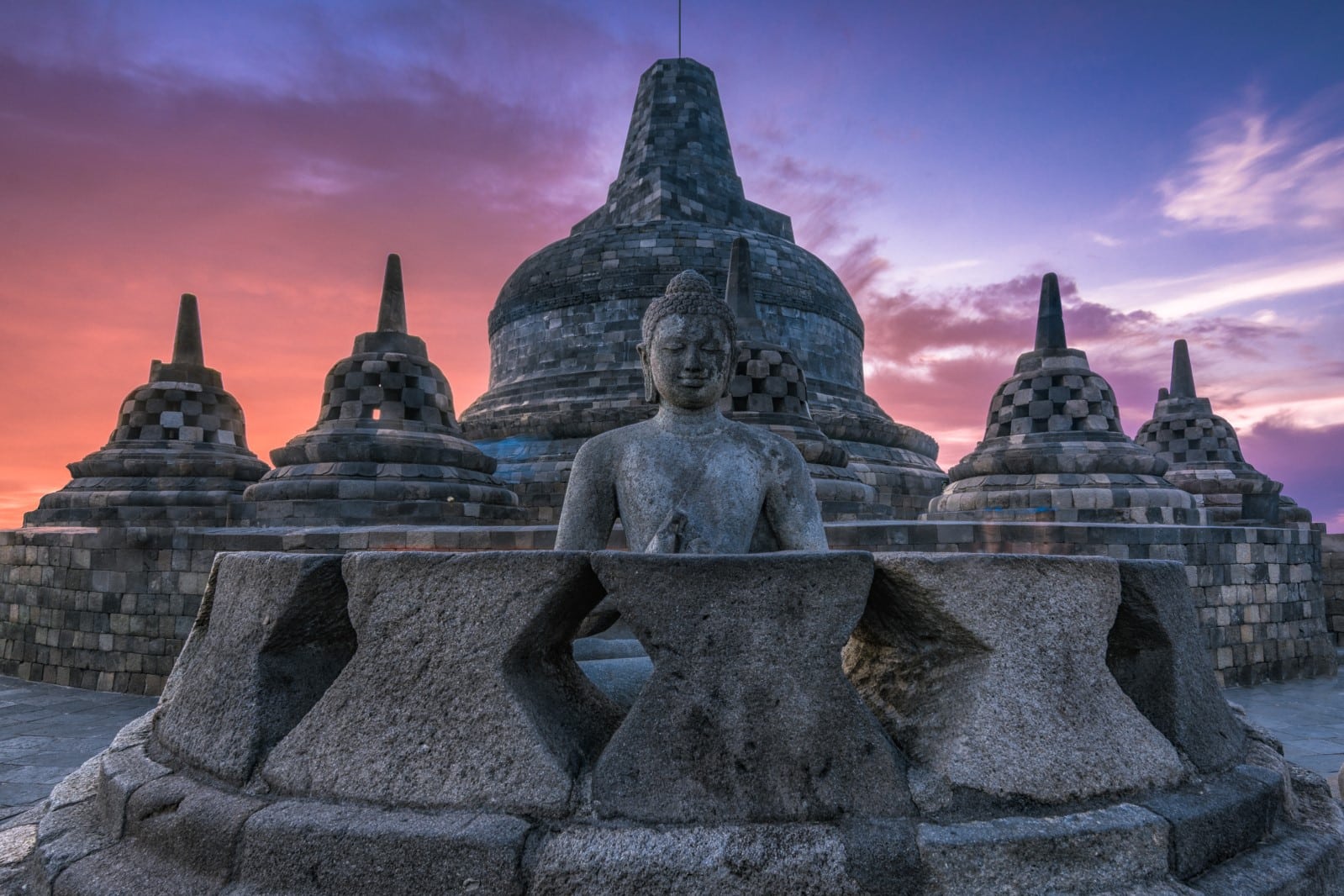
Borobudur Temple (SV), located in Central Java, Indonesia, is one of the most significant Buddhist monuments in the world. Its history and architectural design are both fascinating and intricate.
Imagine a structure from the 8th and 9th centuries, nestled in the lush landscapes of Java. This is Borobudur, one of the most significant Buddhist monuments in the world. Constructed under the auspices of the Sailendra Dynasty, it stands as a testament to the flourishing Buddhist art and architecture of that era.
What makes Borobudur extraordinary is its design. It’s built as a mandala, symbolizing the Buddhist cosmos. The temple is a stepped pyramid with nine platforms. The lower six are square, and the upper three are circular, topped with a central dome. This architectural marvel is not just a feast for the eyes but also a spiritual journey, with miles of intricate bas-reliefs depicting scenes from Buddha’s life and teachings.
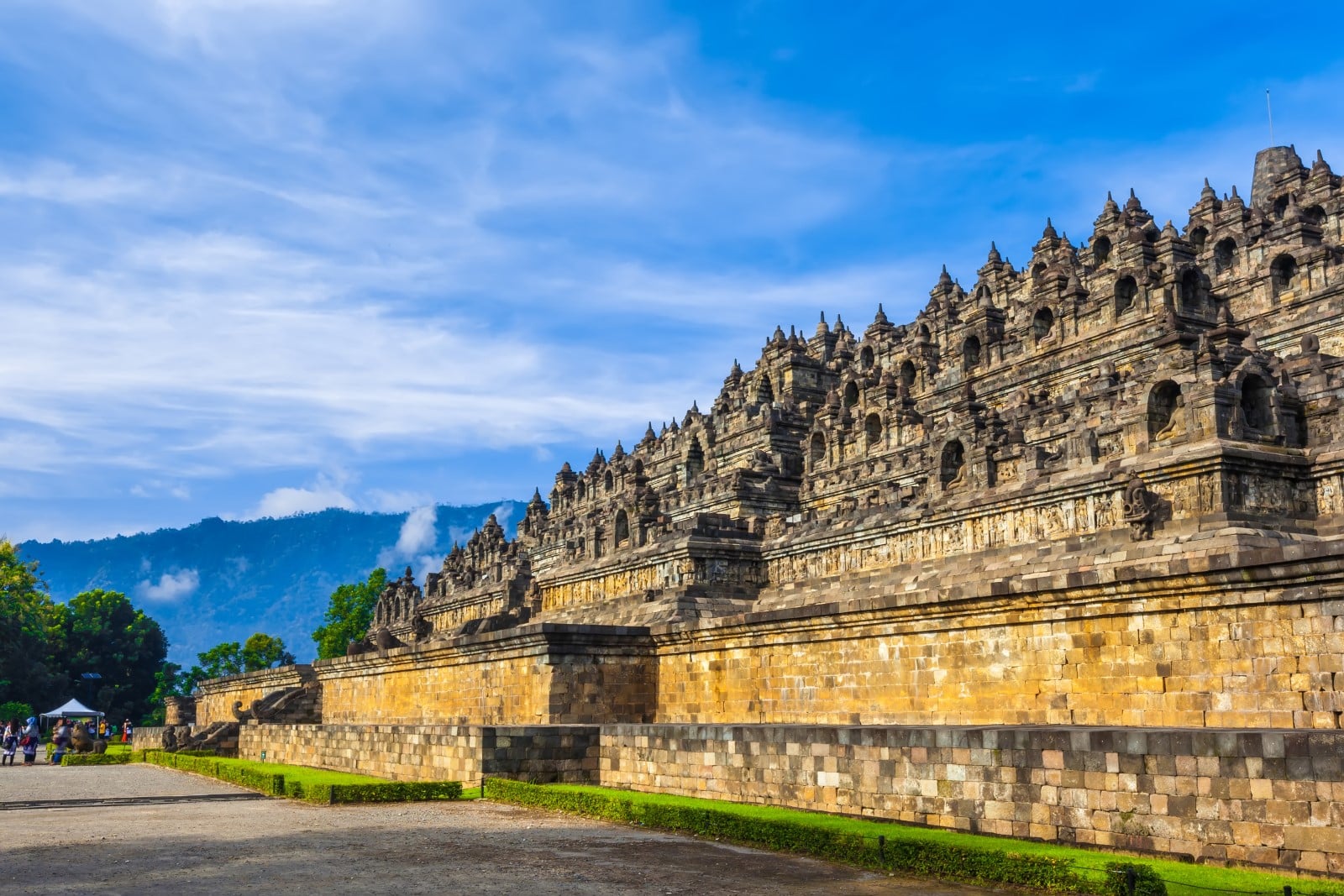
For centuries, Borobudur lay forgotten, buried under layers of volcanic ash. It was in the 19th century that Sir Thomas Stamford Raffles, the British ruler of Java, rediscovered it, bringing it back into the limelight.
Since its rediscovery, Borobudur has undergone several restoration efforts, the most significant being in the 20th century under UNESCO. These efforts were crucial in preserving the temple’s intricate carvings and structure, which had faced the ravages of time and the environment.
Today, Borobudur is not just an Indonesian treasure but a World Heritage Site, recognized globally for its historical, cultural, and architectural significance. It attracts scholars, history enthusiasts, and tourists from all over the world, eager to witness its ancient beauty and to reflect on the spiritual messages its stones have carried through the ages.
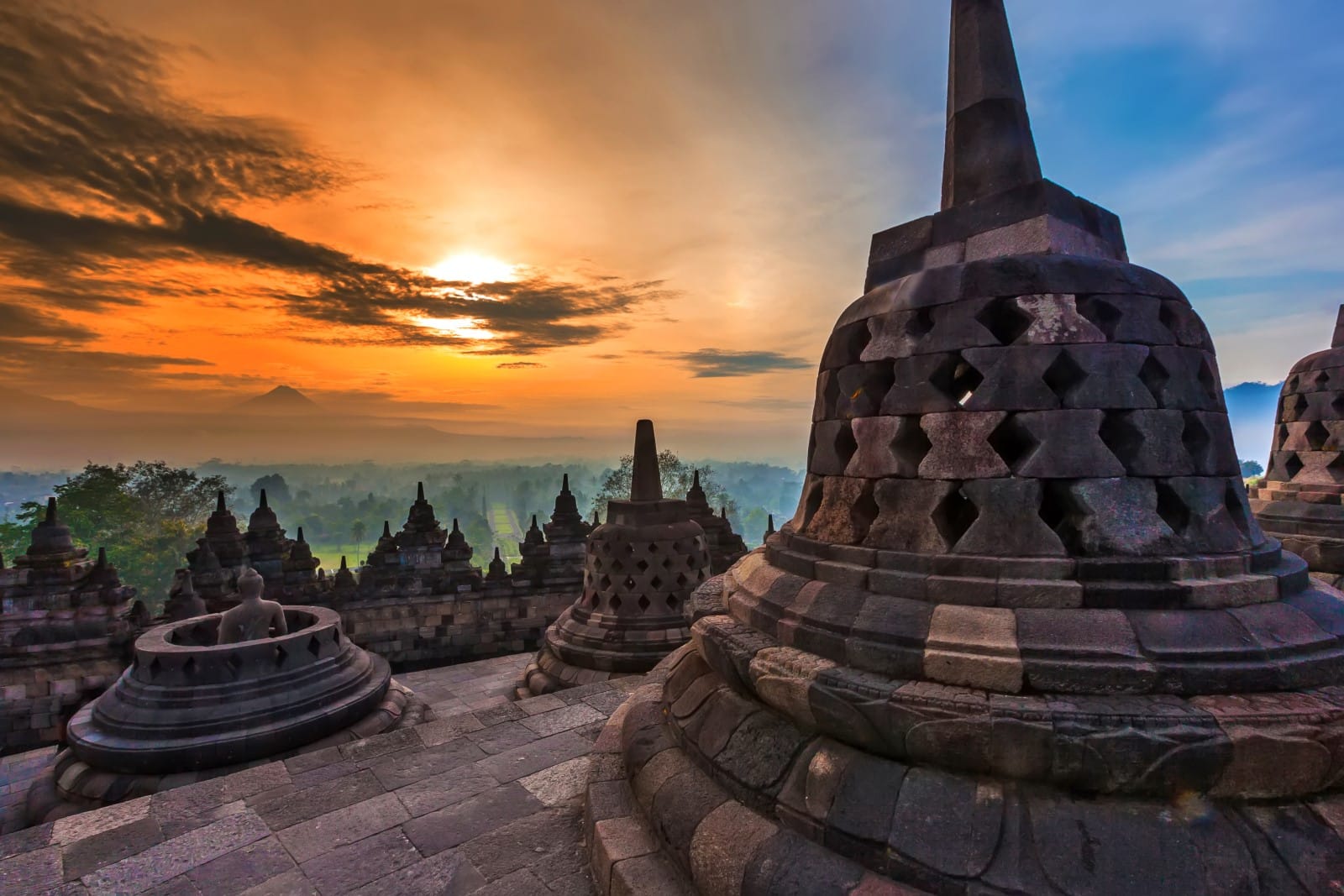
Architectural Ingenuity
Each level of Borobudur symbolizes the stages of Buddhist enlightenment. The base represents the world of desire; the middle levels, the world of forms; and the top levels, the world of formlessness. The temple walls are adorned with over 2,600 relief panels, which are considered to be one of the most complete ensemble of Buddhist reliefs in the world. These panels tell various Buddhist stories, including the Jataka tales that narrate the previous lives of the Buddha. There are over 500 Buddha statues within Borobudur, each positioned in a meditative pose. Many of these statues are enclosed in stupa, bell-shaped structures, which are an iconic aspect of the temple’s architecture.
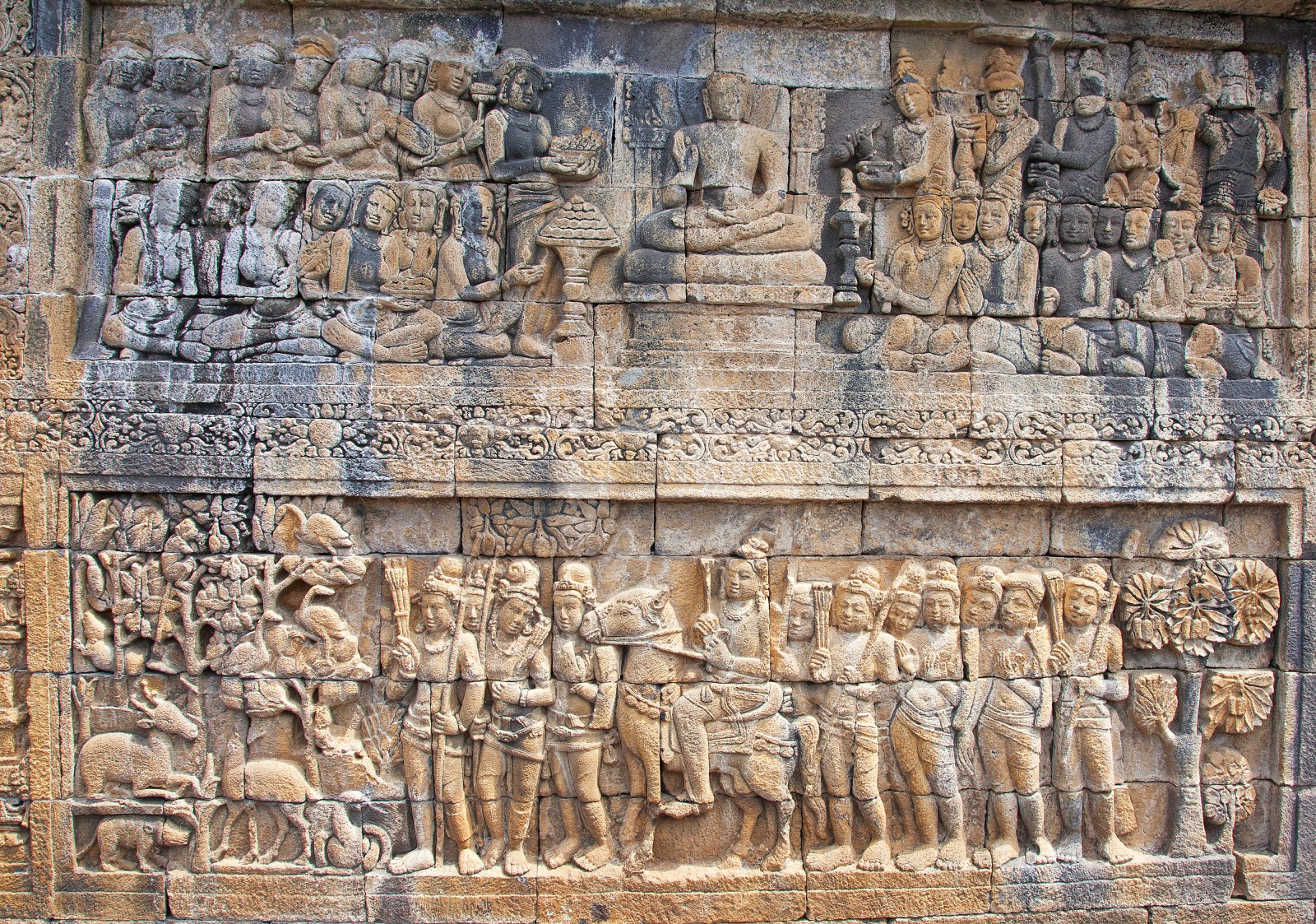
Borobudur is not only a historical monument but also a significant pilgrimage site for Buddhists. The design of the temple allows for a ritual circumambulation, where pilgrims follow a path around the temple, which is a form of spiritual journey in Buddhism. The most important Buddhist festival, Waisak, which marks the birth, enlightenment, and death of Buddha, is celebrated with great fervor at Borobudur. This event attracts thousands of Buddhists from Indonesia and around the world.
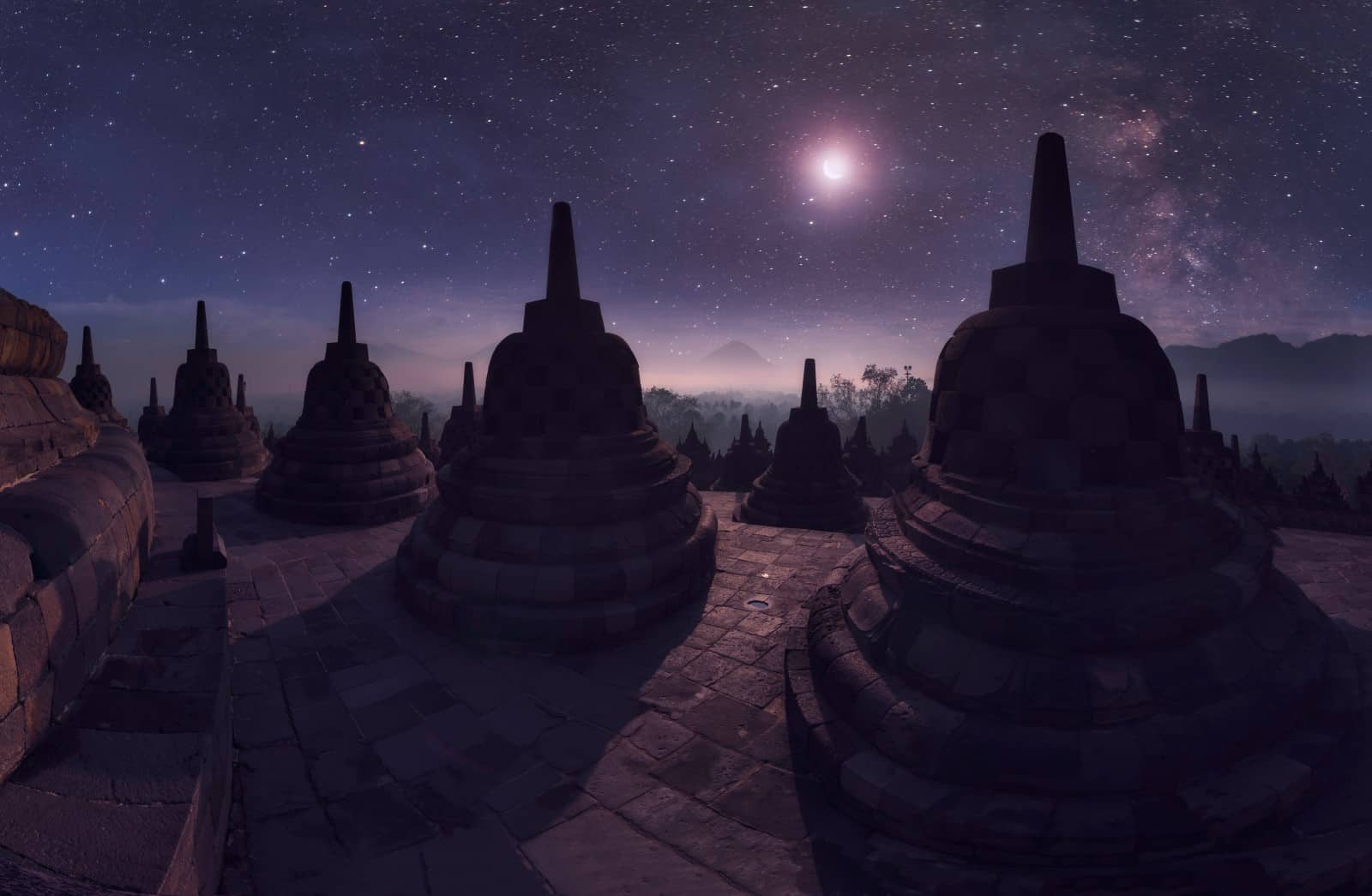
Being located in a tropical climate, the temple faces threats from volcanic eruptions, earthquakes, and erosion. The humid climate also encourages the growth of moss and lichen, which can damage the reliefs. The major restoration project by UNESCO in the 1970s and 1980s involved dismantling much of the temple and rebuilding it to strengthen the structure. This monumental effort is a testament to the global importance placed on preserving this site. Continuous efforts are made to preserve the temple, including regular cleaning of the reliefs, monitoring the structure’s stability, and managing the impact of tourism.
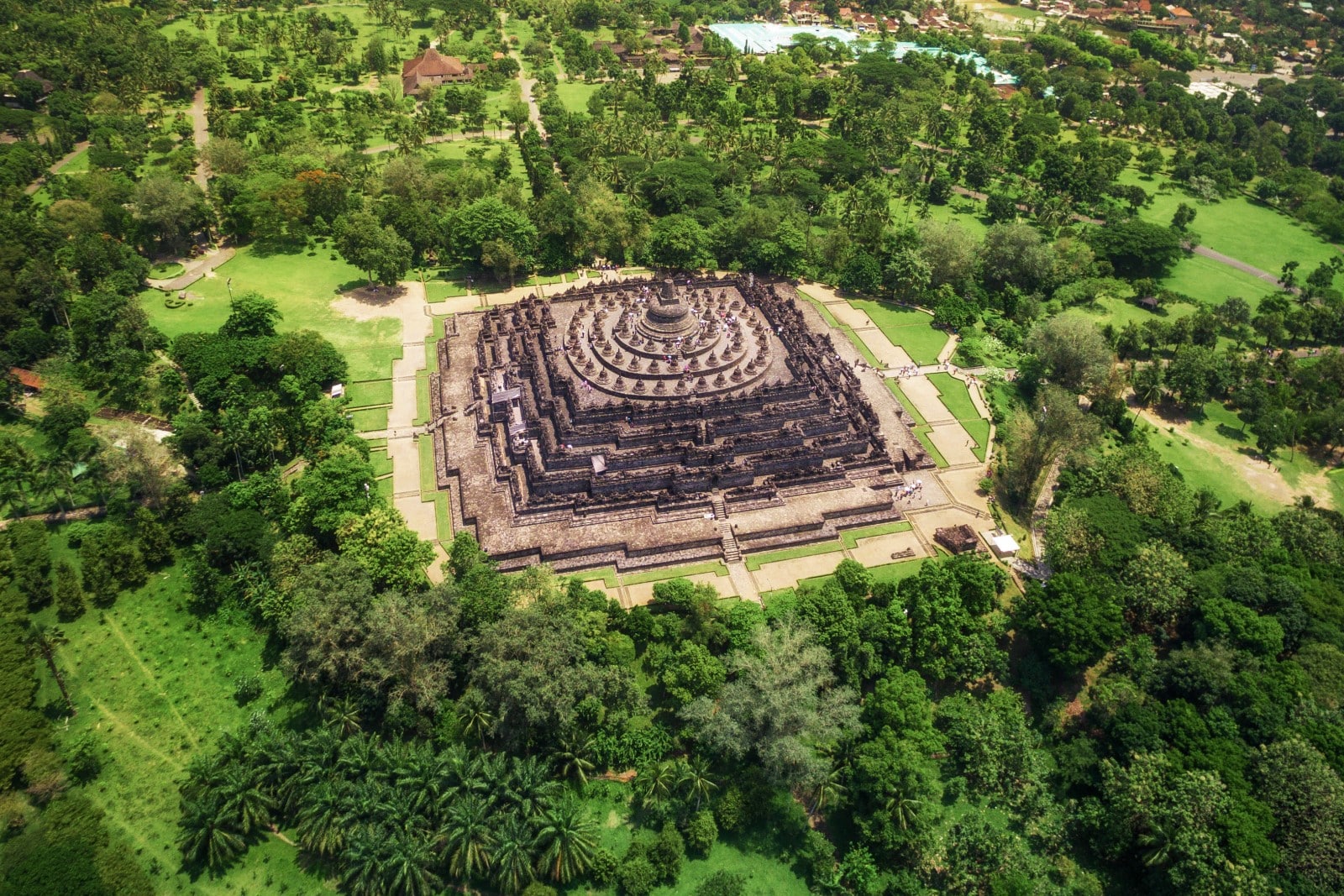
LOCATION
Borobudur Temple is located in the Kedu Valley, in the southern part of Central Java, Indonesia. The temple is situated near the city of Magelang and is not far from Yogyakarta, a major cultural and educational hub of Java. Here’s a guide on how to get there:
Reaching Yogyakarta or Magelang
International Travelers: If you’re coming from outside Indonesia, you’ll likely fly into Jakarta, the capital city of Indonesia. From Jakarta, you can take a domestic flight to Yogyakarta’s Adisucipto International Airport.
Domestic Flights: There are frequent flights from major Indonesian cities like Jakarta, Bali, and Surabaya to Yogyakarta.
Traveling to Borobudur
Once in Yogyakarta or Magelang, you have several options to reach Borobudur:
- By Car or Taxi: The most convenient way is to hire a car or a taxi. The drive from Yogyakarta to Borobudur takes about 1 to 1.5 hours, depending on traffic.
- Bus Services: There are regular bus services from Yogyakarta to Borobudur. The bus journey can take around 1.5 to 2 hours.
- Tour Packages: Many tour operators in Yogyakarta offer day trips to Borobudur, often including other nearby attractions like the Prambanan Temple.
- Renting a Scooter: For the more adventurous, renting a scooter is an option. It allows for a flexible journey and the chance to see the scenic countryside.
Tips for Visiting
Best Time to Visit: The best time to visit Borobudur is early in the morning for sunrise, as the view is breathtaking and it’s less crowded.
Entrance Fees: There is an entrance fee for Borobudur, which includes access to the temple and a small museum.
Cultural Sensitivity: As a sacred site, it’s important to dress modestly and respectfully.
Weather: The climate is typically tropical, so prepare for warm and humid conditions.
Borobudur’s location amidst the lush Javanese landscape adds to its mystical allure. Whether you’re a history enthusiast, a spiritual seeker, or simply a lover of beautiful places, Borobudur is a destination that promises a truly memorable experience.

